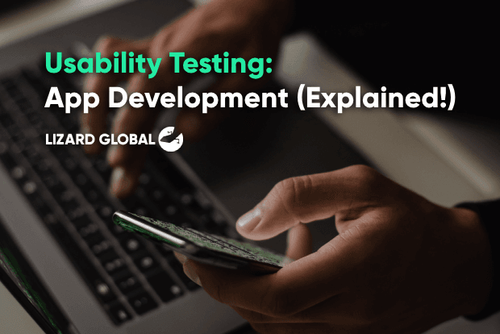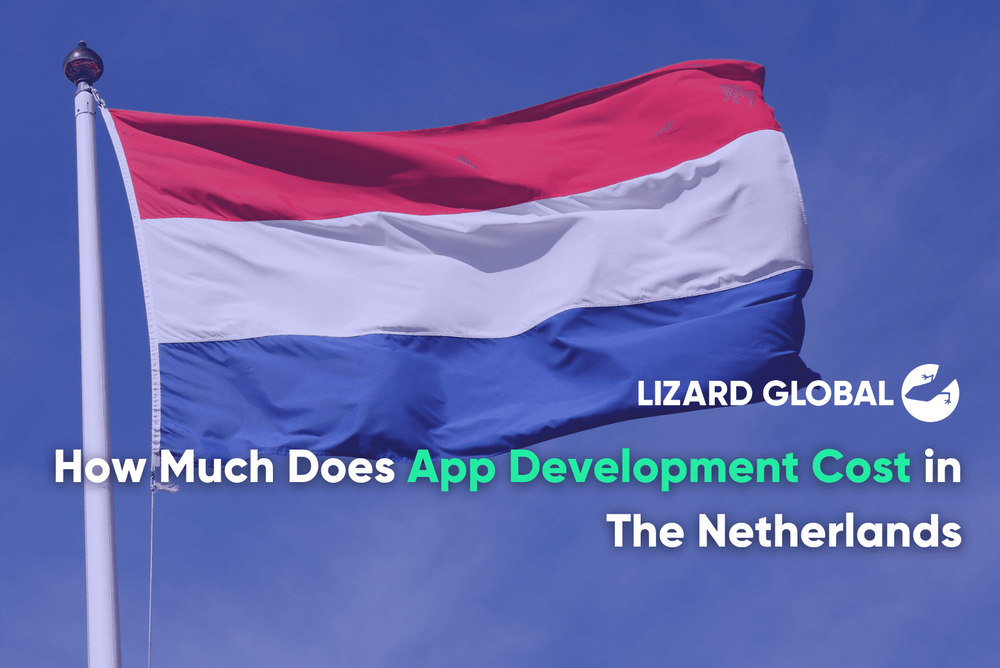Growth of Ecommerce in Malaysia: Insights for 2023
Get the latest updates about our blog posts.
Subscribe so you don’t miss out!
Follow Lizard Global on Facebook, Instagram, and LinkedIn.
The e-commerce market in Malaysia is swiftly growing to be one of the biggest in Southeast Asia. Its expansion is exceeding those of the region's more established, traditional markets. In 2022 alone, the Malaysian e-commerce market was projected to rise by 20%. Along with the global rising customer desire for online purchasing and the availability of personalized payment alternatives in recent years, e-commerce has been booming.
The debut of eBay Malaysia in 2004 marked the beginning of Malaysia's flirtation with online shopping. A few years later, in 2012 and 2015, respectively, two key giants, Lazada and Zalora and Shopee began operating in Malaysia. Shopee is presently the most popular e-commerce platform in the nation because of its phenomenal growth over time and current monthly traffic of almost 55 million visitors. By 2023, the eCommerce market in Malaysia is anticipated to reach RM47.07 billion, and it will grow at a 13.6% CAGR to reach RM78.43 billion by 2027.
But, what makes e-commerce the game changer for businesses in Malaysia? What are the factors? What are key trends that businesses need to look out for? We’ve listed some of our favorite findings and let’s dive into them together!
What are the growth factors of eCommerce in Malaysia?
With an internet penetration rate of 89%, Malaysia has one of the highest levels in Southeast Asia. A growing number of middle-class consumers who are tech-savvy and on the lookout for great discounts and access to international brands are the main drivers of e-commerce growth in Malaysia. Here are some additional key elements influencing the expansion of e-commerce in the area.
National strategic roadmap for e-commerce of the government of Malaysia
The Malaysian government has declared support for strengthening local micro, small, and medium enterprises (MSMEs), recognizing the growth of e-commerce as a tool for inclusivity. To further facilitate international eCommerce and expand the global market for MSMEs, Digital Free Trade Zones have been established. This is anticipated to boost e-commerce in Malaysia even more.
Digitally aware consumers
Malaysia boasts an 89% smartphone adoption rate. More than 29.5 million Malaysians, or more than 89% of the nation's population, use the Internet. Malaysia's mobile commerce market is expected to develop at a rate of 19.7% CAGR to reach RM41.11 billion by 2023, exceeding the country's overall e-commerce growth.
🤔 Curious about the cost of your dream app? Let's crunch numbers together!
We get it, pricing can be a puzzler. But fear not! Our App Cost Estimator tool is here to sprinkle a bit of magic on your budgeting journey. It's as easy as picking your features and voilà—your app investment laid out in front of you. Click, calculate, and get ready for the appventure of a lifetime.
Want to find out how much it costs to build your dream app or web app?
Increase in online food shopping
Malaysia is experiencing a similar surge in food and FMCG e-commerce as other nations in the area. In fact, it is anticipated that Malaysia's Grocery Delivery segment's average revenue per user (ARPU) will reach RM1372.77 in 2023, ranking among the highest in Southeast Asia.
Seamless delivery logistics
Due to the fragmented topology of the region, which is characterized by numerous islands and deep jungles, e-commerce firms in Southeast Asia have historically encountered logistical difficulties. However, because Peninsular Malaysia and East Malaysia are the only two significant regions of Malaysia, e-commerce logistics are much simpler and more affordable.
The rise of social media
Thanks to a number of native shopping initiatives by Facebook, Instagram, and now TikTok, the distinctions between social media and e-commerce are becoming more and more hazy. Additionally, social media offers e-commerce companies a fantastic platform for post-purchase discovery. Malaysia had 26.8 million social media users as of January 2023 or 78% of the country's total population. This upwardly mobile, tech-savvy market segment offers e-commerce companies a sizable potential customer base.
Preference for digital payments
Bank transfers, which account for 44% of all transactions in Malaysia's e-commerce, are the most popular form of payment. Consumers in developing e-commerce markets often shy away from using digital payment methods and favor Cash-on-Delivery substantially. Since COD places restrictions on e-commerce enterprises' ability to scale, this has hampered the expansion of the industry in a number of places, including Saudi Arabia, India, Brazil, and others. With a staggering 93% of all eCommerce transactions occurring in Malaysia via bank transfer and digital payments, the country stands out in this regard. In 2022, Malaysia will lead Southeast Asia in the adoption of digital wallets, with at least 50% of the population having done so.
The evolving trends of eCommerce in Malaysia
The Malaysian e-commerce industry is very comparable to other SEA-growing countries like Singapore, Indonesia, and Thailand. However, there are some fascinating cultural and regional traits to be aware of.
Mobile-first audience
80% of smartphone users in Malaysia currently use their smartphones as tools for online shopping, explaining how quickly consumers in Malaysia have adapted to mobile commerce. By 2021, it is anticipated that mobile e-commerce transactions in the area would total RM25.87 billion. Mobile apps are the most popular e-commerce channel for mobile devices and account for 64 percent of all transactions.
Lizard Global has worked on numerous e-commerce ventures. As a platform where the buying experience is reliant on scrolling through e-commerce sites, it is critical that we provide users with a seamless experience. How can we use Saleor to create high-quality, long-lasting solutions for complete user satisfaction? Find out here in this blog!

Social commerce
Social media platforms like Facebook, Instagram, and TikTok are swiftly establishing themselves as key participants in the e-commerce industry. Users can make purchases without ever leaving these sites thanks to the inclusion of commerce capabilities like TikTok's Shop and Facebook's Marketplace. Social commerce growth is anticipated to be fueled by this seamless connection through 2023 and beyond.
Pricing pressure
Customers can price compare in the open world of eCommerce. Thus, there is more demand for commoditization, especially when using online shopping platforms like Shopee. And prices fluctuate more quickly. This develops strategies for differentiating the products you sell. When done correctly, value pricing might perform better than marketing pricing.
Personalized user experience (UX)
Online retailers are leveraging data analytics and artificial intelligence (AI) to offer customized product recommendations, targeted advertising, and personalized email marketing in response to consumers' increased need for personalized shopping experiences. Retailers will increasingly use a combination of customer data and predictive analytics to design specialized shopping experiences in 2023, according to predictions.
Digital payments & e-wallets
Digital wallets and bank transfers are the most popular payment options in Malaysia for ease of use. More than half of Malaysians now have access to an average of two cashless payment options, and they primarily use them at restaurants, bars, and stores. In Malaysia, e-wallets and digital wallets are rapidly expanding payment options. As more people started using this method for eCommerce purchases, the number of active e-wallets registered users grew dramatically, from 8.7 million in 2020 to 13.5 million in 2021. On the other hand, since the 45-54 age group favors COD when shopping online, it is still advisable to accept cash on delivery (COD) as a form of payment.
How do you grow your brand in eCommerce?
A successful e-commerce strategy involves increasing both organic traffic and the visibility of your online store. And the thing about Malaysian consumers is that the more "visits" and "reviews" your e-commerce site receives, the more customers you'll draw in! This is why, on occasion, it can be critically important for you to work with an e-commerce digital partner and solution provider to draw in Malaysian customers.
Developing an efficient e-commerce strategy brings tons of benefits, which we have highlighted in this blog. Believe it or not, it can be done quickly by following these tips:
- Recognize your target demographic
- Streamline the client experience
- What makes your offer special?
Need a hand?
Whether you're a budding entrepreneur or an established company looking to set up an online store, we would be honored to collaborate with you and become your full-stack digital partner! E-commerce is undeniably growing and is here to stay, therefore we are ecstatic to assist you in boarding and accompany you as you ride the waves.
For more inspiration, have a look at Heineken, CNCRD, and some of our other collaborators. Why are you holding out? Send us a message, and let's get going!

Curious about the cost of your dream app? Let's crunch numbers together!
We get it, pricing can be a puzzler. But fear not! Our App Cost Estimator tool is here to sprinkle a bit of magic on your budgeting journey. It's as easy as picking your features and voilà—your app investment laid out in front of you. Click, calculate, and get ready for the appventure of a lifetime.
Want to find out how much it costs to build your dream app or web app?




